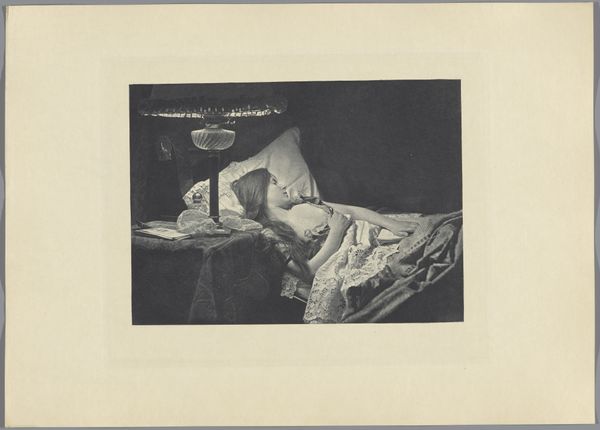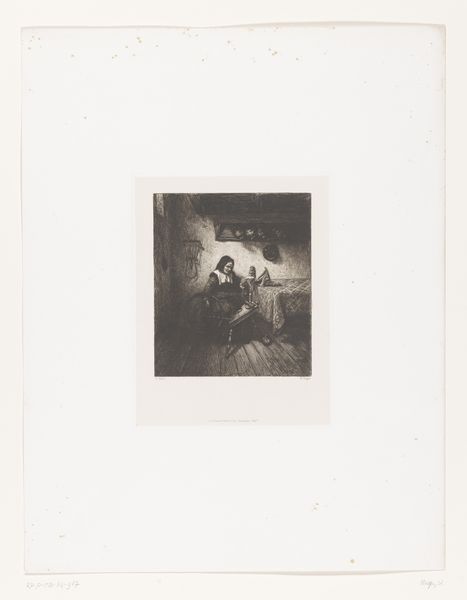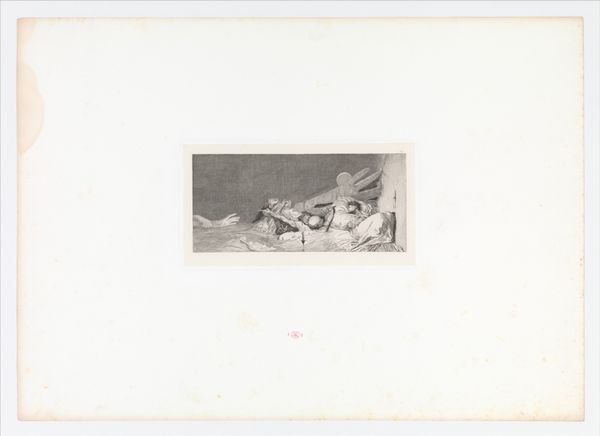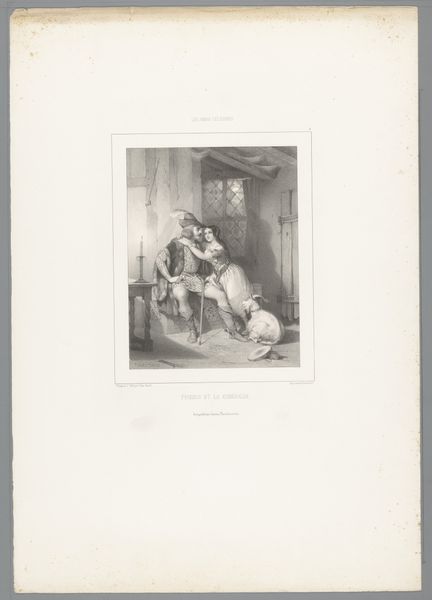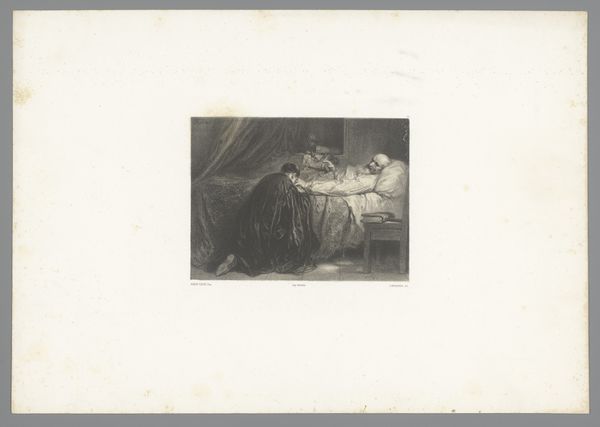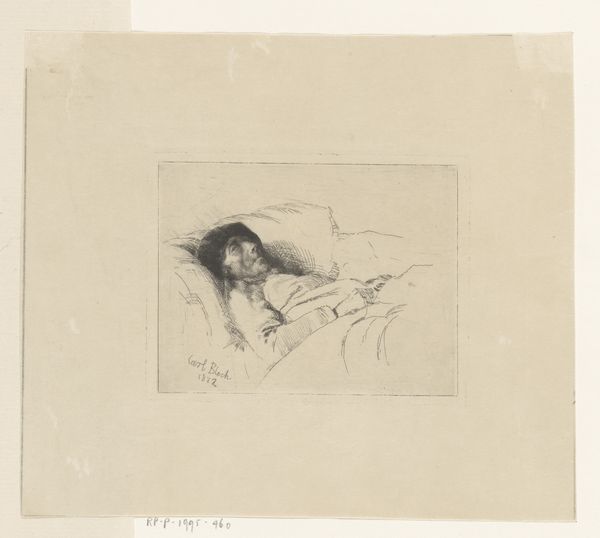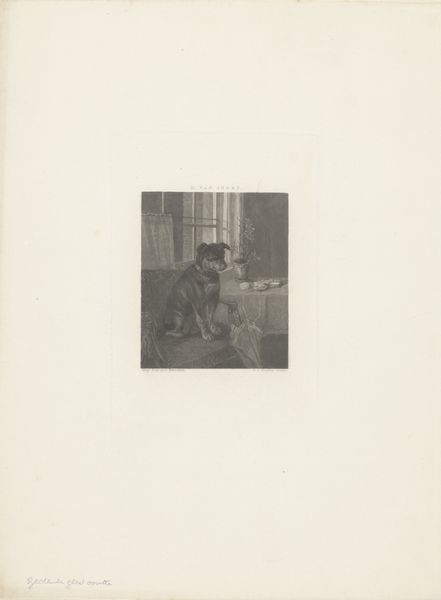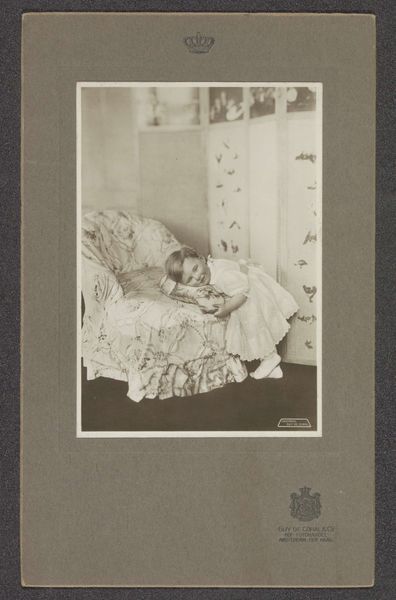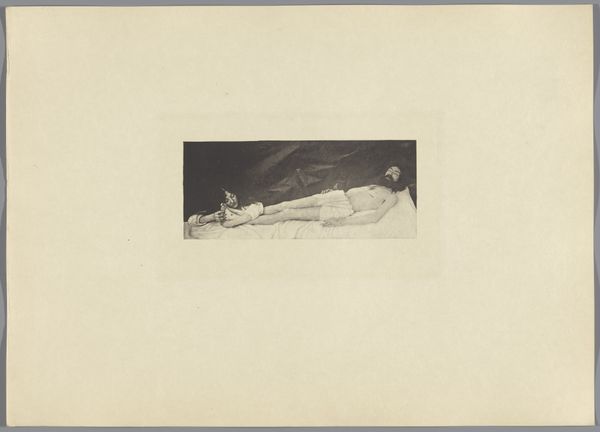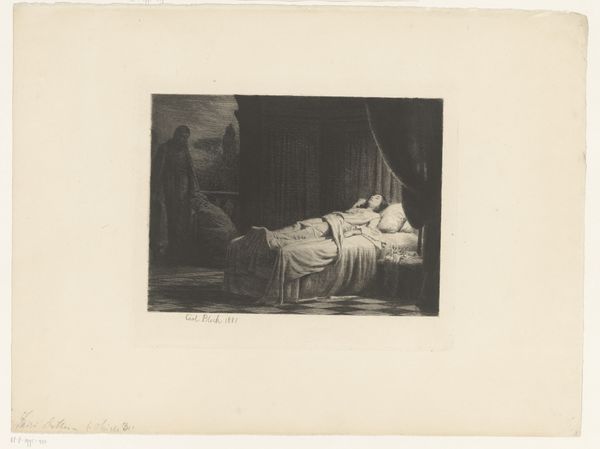
lithograph, print
#
portrait
#
narrative-art
#
lithograph
# print
#
romanticism
#
genre-painting
Dimensions: height 231 mm, width 291 mm
Copyright: Rijks Museum: Open Domain
Curator: Let's take a look at "Sterfbed van een arme schilder" from 1844, which translates to "Deathbed of a Poor Painter." Marie-Alexandre Alophe created this poignant piece, a lithograph housed right here at the Rijksmuseum. Editor: My immediate response is one of melancholy. The composition, the greyscale tonality, even the sloped shoulders of the grieving dog communicate a profound sense of loss. The intimate, claustrophobic space contributes to that feeling. Curator: The social context of this work is important. The romantic portrayal of the struggling artist was a popular theme. It reflected anxieties surrounding the artist’s role in society, particularly during periods of social and political upheaval. Alophe, presenting this scene at Salon of 1844, taps into societal fears of poverty, creative sacrifice, and artistic demise. Editor: It strikes me how the dog seems to act as a kind of stand-in for all the friends, lovers, family, etc., who should be there during the painter's final hours. Considering class politics, you wonder, does the dog, as perhaps the sole figure, further indict a society which so often overlooks these less fortunate people, even until death? It even recalls those stereotypical characterizations in feminist discourse in which woman or some subaltern entity—represented here by the dog—are hyper-sensitized in contrast to the perceived rationality, logic and apathy attributed to more patriarchal bodies or institutions. Curator: Interesting. And, it definitely begs a question: What led to this artist's destitution? Was it societal indifference, lack of patronage, or personal choices? I think Alophe pushes back on that latter perception of the ‘artist making a noble choice of suffering. Editor: It certainly complicates that narrative. The still life with what seems to be liquor—wine glasses on the small table—suggests, along with the abandoned instrument, some sense of neglect. Yet the small size, relative simplicity and focus on grief seems, to your point, much more socially conscientious of an interpretation Curator: Indeed. By understanding how imagery circulates, how artists responded to the demands of the art market, we glean new insight to even overlooked, obscure prints like this, where so many layers and complex themes persist! Editor: Precisely, art pieces like Alophe's "Deathbed of a Poor Painter," far from simply depicting a sentimental scene, provides invaluable data for reflecting on both historical attitudes of the past as well as, of course, contemporary understandings surrounding artistic expression, socio-economic status, the cultural importance of memory and grief, and what our place in relation to it should or shouldn't be.
Comments
No comments
Be the first to comment and join the conversation on the ultimate creative platform.
